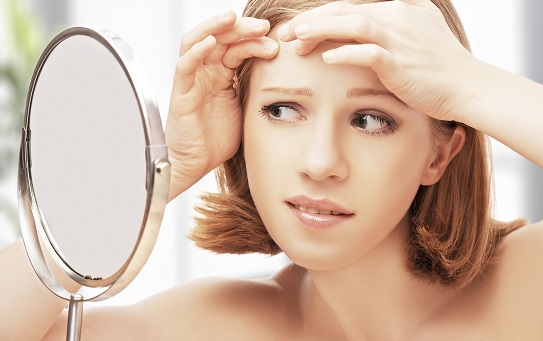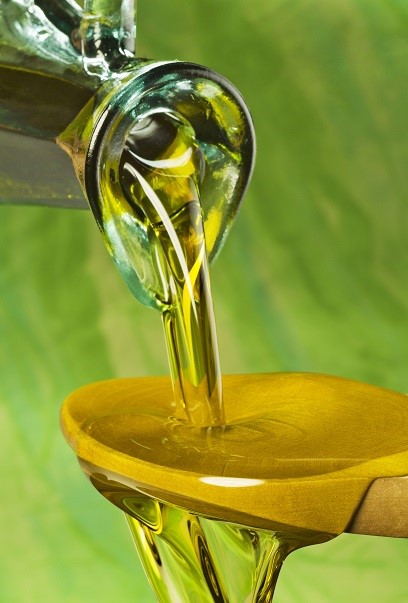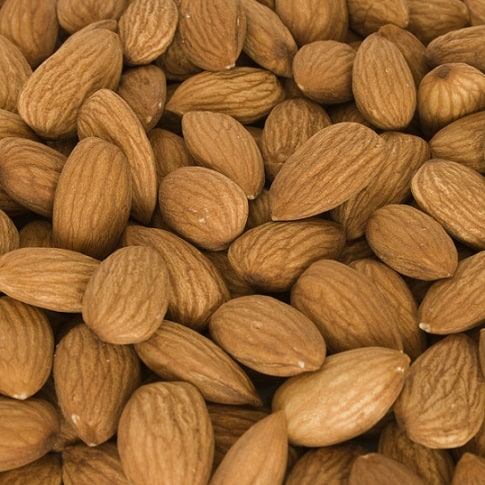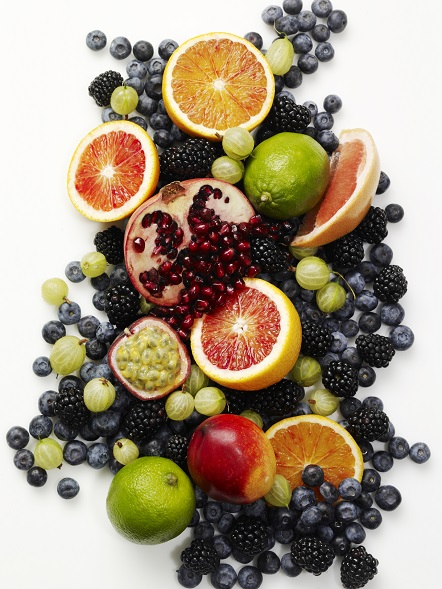 Most acne patients have no idea what the real causes of acne are. The internet is full to the brim with myths and misconceptions.
Most acne patients have no idea what the real causes of acne are. The internet is full to the brim with myths and misconceptions.
First you have the acne gurus who claim that you need to buy their vitamin supplements. Then you’ve got the detox merchants who claim that your liver is toxic, and you need to buy their detox kits.
Finally you have your kindly but rather misguided doctor, who assures you that hygiene is to blame and you can easily solve the problem by using the latest face wash.
With such a vast sea of fraud and business interests it is extremely easy for an acne patient to get confused, or knocked off course entirely.
You’ve got to make sure that this doesn’t happen to you, and fortunately there is an easy solution: learn the root causes of acne. If you understand the actual science behind acne then these fraudulent claims will simply bounce off you.
There are a few correct claims out there; for example vitamin deficiencies can be important, and face washes will have a limited effect. However the claims are often exaggerated for business purposes; knowing the science will allow you to separate the nonsense from the truth. You will also be able to identify the opposite; obscure strategies that seem like scams to the average person, but make sense to you thanks to your knowledge of the science.
Aside from avoiding scams, you also need to know the root cause of acne so that every strategy makes sense to you. If you don’t actually understand what you’re doing then curing acne is far harder. You might stumble upon a solution that does work, but if you don’t understand why it does, then it’s all too easy for you to unknowingly make a choice that lets the acne return.
Note: this is a very complicated subject. If you want the bare bones on the first cause of acne, then scroll down to the end of this article.
The real causes of acne
The two basic causes of acne are blocked skin pores and chronic inflammation. There is a huge variety of other factors that can lead to acne, but every single one does so through those two pathways.
Blocked pores create the perfect environment for acne to breed, and chronic inflammation is the fuel for the acne fire that really kicks things off.
In this article we will cover blocked skin pores, how they occur, and the specific science behind the problems they cause. Most people think that oily skin is the main reason behind blocked pores, but it isn’t; by far the most important factor is sebum oxidation.
What on earth is sebum oxidation?
Firstly, oxidation is simply the process of something reacting with oxygen. This occurs in all walks of life; a banana that ripens is oxidising, and a steak that turns grey in your fridge has oxidised to an extent.
Sebum on the other hand, will be familiar to you as it is the oil your skin produces. Sebum’s primary job is to lubricate your skin, and thus protect it from dryness and damage. For example, have you noticed that on a hot day your skin gets oily? Most people think this is sweat, but it’s actually sebum, which is lubricating your skin and protecting it from dryness.
Sebum is an oil that is made of various fatty acids, some of which are triglycerides and wax esters. 12% of sebum is squalene and it is this substance that leads to acne.
While the process might be called sebum oxidation it is really the squalene that oxidises. When squalene gets attacked by oxygen, it mutates into a substance called squalene peroxide, and this is one of the most powerful acne causing substances in the whole world. It is so powerful that in one study scientists could create acne simply by applying squalene peroxide to a rabbit’s ear.
Read Annihilate Your Acne – learn to prevent acne and stop just treating it!
What’s even more interesting is that the amount of acne produced correlated directly to the amount of squalene peroxide applied.
But why is squalene peroxide so bad?
The problem is that SP is highly comedogenic, which means that it blocks your skin pores. When sebum oxidises, it causes a condition called hyperkeratosis, which means that far too much keratin is produced. Keratin is this tough protein that binds your skin together and keeps it hardy.
More of that might sound like a good thing, but with too much keratin not only do your healthy cells stick together, but your dead ones do as well. These dead skin cells then glue together, form giant clusters and lodge in your skin pores.
What makes squalene peroxide doubly effective is that it stimulates a local increase in sebum. Most acne patients have gallons of sebum on their face anyway, and this localised increase makes matters worse. The excess sebum then combines with dead skin cells, forms the perfect recipe for blocking your skin pores, and does precisely that.
How blocked pores lead to acne
When your skin pores get full of sebum and skin cells it alters the oxygen tension, allowing bacteria (p. acnes) to flood in and breed. If you suffer from chronic inflammation, then this bacteria will be attacked with an overwhelming immune system response and your pores will get red, swollen and painful.
So squalene peroxide itself does not create the pimple, but it is still extremely important because it provides the conditions in which acne breeds. With no sebum oxidation, there are no blocked pores, and almost certainly no acne.
To summarise, sebum oxidation creates squalene peroxide, which triggers a massive increase in the substances that block your pores.
How does sebum oxidise? The role of vitamin E
 Your body knows that the squalene in sebum can cause problems when oxidised, and to combat this it has a potent weapon: antioxidants. The main job of an antioxidant is to prevent oxidative damage (you may have guessed this), and to prevent this from happening to sebum your body sends a ready supply of them.
Your body knows that the squalene in sebum can cause problems when oxidised, and to combat this it has a potent weapon: antioxidants. The main job of an antioxidant is to prevent oxidative damage (you may have guessed this), and to prevent this from happening to sebum your body sends a ready supply of them.
The particular antioxidant your skin prefers is vitamin E, which is the 2nd most abundant antioxidant in your body. The reason why vitamin E gets the honour is because 1) it is particularly potent, and 2) vitamin E is fat soluble, meaning that it works well in sebum (which is made up of fatty acids).
The top 6 vitamins and minerals for clearing acne forever
Your body actually sends vitamin E to your skin in a very tight correlation with the amount of sebum produced; in other words, the more sebum you produce the more vitamin E will be sent there. In clear skinned people this system is working very effectively; vitamin E is preventing squalene oxidation, pores aren’t getting blocked, and there is no acne…
Acne patients, on the other hand, do not have enough vitamin E to protect all the squalene. The amount of squalene produced basically outnumbers the amount of antioxidants available. This can happen due to three key factors.
Factor 1 – excessive sebum production
 When you produce masses of sebum, it means that far more antioxidants are required to protect it, and this in turn makes it likely that you aren’t getting enough. The problem is that almost every acne patient is unaware that oilier skin needs more antioxidants, so they don’t compensate by changing their diet.
When you produce masses of sebum, it means that far more antioxidants are required to protect it, and this in turn makes it likely that you aren’t getting enough. The problem is that almost every acne patient is unaware that oilier skin needs more antioxidants, so they don’t compensate by changing their diet.
By far the biggest contributor to oily skin is hormones, including androgens like testosterone and DHT, and also insulin and IGF-1. These all stimulate the receptors in your sebaceous glands, which signals them to create more sebum.
However you do NOT need to reduce all these hormones. It is best to focus on reducing insulin and IGF-1. Testosterone and DHT are vital for all the androgenic effects that we all know and love; sex drive, a deep voice, muscle mass, and aggression (focussed and used in the right way, of course).
Recommended – the 7 greatest natural topical treatments for acne
It is very healthy to have high levels of androgens and you can easily reduce sebum by focussing on insulin instead. Insulin should not be entirely reduced, but most people have excessively high levels of it. IGF-1 is an offshoot of insulin and is naturally reduced as insulin falls.
Numerous other factors can also increase sebum production, with vitamin deficiencies being a prime example. Then you have many other factors that impact your insulin levels; for example, we cover in my eBook Annihilate Your Acne how sleep deprivation can severely impair your insulin functioning.
Factor 2 – lack of antioxidants in the diet
If you don’t get enough antioxidants in your body then there won’t be enough to protect your skin. The good news is that the solution is very simple; eat more antioxidant rich foods. The average Westerner doesn’t eat anywhere near enough of these foods; his intake of green vegetables, colourful fruits and herbs is far too low.
If you have high sebum production and acne then it’s likely that you need more too. There will be a ton of information coming about antioxidant rich foods but for now, remember that the following foods are rich in antioxidants: green vegetables, berries, herbs, spices, coffee, tea, and dark chocolate.
One classic example of an antioxidant rich food is the pomegranate. Eggs actually contain a good amount of antioxidants too, like the eye-protecting carotenoid lutein, something that they’re not generally noted for.
Why zinc supplements can reduce acne by 49.8%
The most important antioxidant to get is vitamin E, as it is so vital for protecting your squalene. This study here found that acne patients are much more likely to be deficient in vitamin E…
…but other antioxidants will help too; vitamin E has numerous other antioxidant functions in the body, and by getting other antioxidants you can relieve it from these duties and allow it to focus on protecting squalene. The other main fat-soluble antioxidant is vitamin A, and the great thing about vitamin A is that it’s also fantastic for treating oily skin.
Factor 3 – oxidative stress in the rest of the body
 One of an antioxidant’s biggest jobs is to neutralise free radicals, and when there isn’t enough antioxidants to do this you’re in a condition called oxidative stress. Free radicals are highly reactive molecules in your body that are missing an electron, or in basic terms, their structure is incomplete. This makes them highly unstable and to regain this stability, they go on a quest to find another electron.
One of an antioxidant’s biggest jobs is to neutralise free radicals, and when there isn’t enough antioxidants to do this you’re in a condition called oxidative stress. Free radicals are highly reactive molecules in your body that are missing an electron, or in basic terms, their structure is incomplete. This makes them highly unstable and to regain this stability, they go on a quest to find another electron.
The problem is that this quest leads them to target healthy cells; the free radical will basically “steal” the electron of another molecule. This might seem great, as the free radical has regained its stability, but the problem is that the molecule it stole the electron from is now a free radical in its place.
Why bread and pasta are a massive cause of acne
This then embarks on a quest of its own, and then the next molecule embarks on a quest, and then the next one, and so on. The result is a cascade of damage to cells in your body; they are continually getting their electrons pinched, breaking down, and disrupting your bodily function.
What’s even more problematic is that free radicals cause such a big cascade that they can reach and thus damage any part of your body. One of the classic problems caused by free radicals is blindness, due to healthy cells of your eyes being attacked.
There are numerous other problems that free radical overload can cause and they include cancer and heart disease. The basic message is that too many free radicals are toxic for your body and hence, your body automatically attempts to neutralise them.
To do this your body uses antioxidants. Antioxidants hunt down your free radicals and give them extra electrons; thus their stability is restored and they no longer cause damage. Antioxidants are well suited to this function because they don’t become free radicals themselves; they are stable either with an extra electron or without one.
How this affects your skin – the problem this poses for your acne is very simple: when there are more free radicals in your body, more antioxidants are needed to deal with them, and this leaves less available to protect your squalene.
Free radical formation is affected by your diet, but also numerous lifestyle factors. Smoking is a particularly notorious cause. Chronic inflammation can cause a huge increase in free radicals (you’ll find out more tomorrow). Countless environmental chemicals found in beauty products that you might be using can increase free radicals.
Air pollution is a factor, even sugar consumption can generate free radicals in your very bloodstream. Some claim that marijuana smoke bathes your skin in free radicals, but it’s generally safer than tobacco as long as you vape it.
Using antiperspirants and deodorants causes free radicals to form, pesticides in fruits can generate them once inside your body. The sources are endless.
Why dairy can either destroy your skin or improve it
For a start you can read this article containing 9 simple strategies to avoid free radicals. They include avoiding apple juice, minimising sugar, and ditching any benzoyl peroxide creams.
Summary
It’s very important that you understand sebum oxidation. However you don’t need to know every tiny little detail. If the explanations above were too complex for you, then the summary below will give you everything you need to know.
- Sebum oxidation is one of the two most important causes of acne. It is responsible for blocking your skin pores, which is what allows acne to develop in the first place.
- Sebum is the oil that lubricates your skin. Acne patients typically have higher sebum production.
- To oxidise simply means to react with oxygen. It is actually not sebum that this happens to, but squalene, which is a key component of sebum.
- When squalene oxidises it transforms into squalene peroxide; this is what makes sebum oxidation bad for acne.
- Squalene peroxide blocks your pores by stimulating even greater sebum production, and by increasing the number of dying skin cells. These factors combine and form the perfect recipe for blocked pores.
- Sebum alone can block your pores but when it oxidises, the process above means that the situation is far worse.
- Your body prevent sebum oxidation by sending antioxidants to your skin.
- Therefore the basic situation that causes sebum oxidation is when your sebum production is greater than the antioxidants available to protect it.
- This situation arises in three ways. The first is if your sebum production is abnormally high, making it impossible to get enough antioxidants.
- The second cause is not getting enough antioxidants in your diet.
- The final factor is excessive free radicals in your body. You body uses up antioxidants to destroy these free radicals and thus prevents them from protecting your skin.
If you don’t have the time to research the science behind acne in extreme detail, and if you want a supplement that will tackle the above factors in a natural way, then an excellent starting point is to take extra vitamin E.
Adding supplementary vitamin E on top of that you gain from your diet already will strengthen your skin against free radicals tremendously.
The ultimate vitamin E supplement, the one I recommend elsewhere on this website, is this Garden of Life Raw Vitamin E (amazon link). As opposed to traditional vitamin E supplements, which contain a single isolated form like alpha-tocopherol, this vitamin E is derived from plants and contains the full array of tocopherols and tocotrienols for optimal absorption in humans. Hence it’s doubly effective at preventing acne.
Conclusion
I’ll reiterate the point; preventing sebum oxidation is one of the two best strategies for clearing your skin. Without sebum oxidation there are few blocked skin pores, and without blocked pores acne struggles to survive at all.
Sebum oxidation isn’t hard to tackle either; lowering your insulin levels and boosting your antioxidant supplies are the best strategies, and doing both is extremely easy.
All this might be very complicated but if you put in a bit of effort and make sure you understand it, you will reap the rewards when you are faced with your own choices.
We’ve discussed the first root cause of acne so that only leaves the second: chronic inflammation. Understanding both of the root causes in detail will give you all the weapons available; simply preventing sebum oxidation will work well, but if you combine this with ending chronic inflammation then your acne will be completely crushed.
Come back tomorrow, on October 12, for an article about the acne causing menace of chronic inflammation.
Update: here it is, part two of the real causes of acne
Thanks for reading!